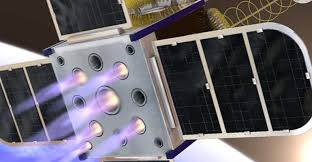
Breaking News
6.5x55 Swedish vs. 6.5 Creedmoor: The New 6.5mm Hotness
Best 7mm PRC Ammo: Hunting and Long-Distance Target Shooting
 Christmas Truce of 1914, World War I - For Sharing, For Peace
Christmas Truce of 1914, World War I - For Sharing, For Peace
Top Tech News
 EngineAI T800: Born to Disrupt! #EngineAI #robotics #newtechnology #newproduct
EngineAI T800: Born to Disrupt! #EngineAI #robotics #newtechnology #newproduct
 This Silicon Anode Breakthrough Could Mark A Turning Point For EV Batteries [Update]
This Silicon Anode Breakthrough Could Mark A Turning Point For EV Batteries [Update]
 Travel gadget promises to dry and iron your clothes – totally hands-free
Travel gadget promises to dry and iron your clothes – totally hands-free
 Perfect Aircrete, Kitchen Ingredients.
Perfect Aircrete, Kitchen Ingredients.
 Futuristic pixel-raising display lets you feel what's onscreen
Futuristic pixel-raising display lets you feel what's onscreen
 Cutting-Edge Facility Generates Pure Water and Hydrogen Fuel from Seawater for Mere Pennies
Cutting-Edge Facility Generates Pure Water and Hydrogen Fuel from Seawater for Mere Pennies
 This tiny dev board is packed with features for ambitious makers
This tiny dev board is packed with features for ambitious makers
 Scientists Discover Gel to Regrow Tooth Enamel
Scientists Discover Gel to Regrow Tooth Enamel
 Vitamin C and Dandelion Root Killing Cancer Cells -- as Former CDC Director Calls for COVID-19...
Vitamin C and Dandelion Root Killing Cancer Cells -- as Former CDC Director Calls for COVID-19...
 Galactic Brain: US firm plans space-based data centers, power grid to challenge China
Galactic Brain: US firm plans space-based data centers, power grid to challenge China
Safer solid propellant for cubesats

Unlike a traditional composite propellant, which mechanically mixes a fuel and an oxidizer into a high explosive, the new propellant ignites an energetic fuel — really a low explosive. Then hydrogen and nitrogen gases from the burning fuel flow through the solid oxidizer component of the system, which gasifies, mixes with the fuel gases and unleashes significant thrust.
Both components of this binary system, the energetic fuel and the oxidizer, are immune to detonation, a huge advantage over other rocket fuels. Even the shock from the detonation of a material like C-4 in direct contact with the motor would not cause the propellant itself to detonate. Also, because the system uses solid materials, it cannot leak, has no pressurized gases and has no moving parts like a liquid system.
Besides being able to power CubeSats and thus greatly increase their utility and flexibility, the propellant offers safe propulsion for many other applications that typically utilize solid rocket motors, even model rockets.

 The State's Last Stand
The State's Last Stand


